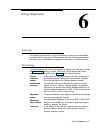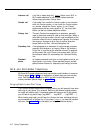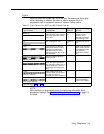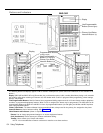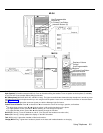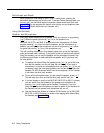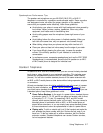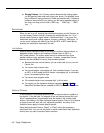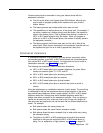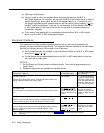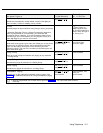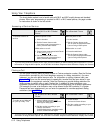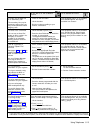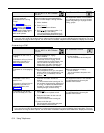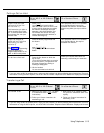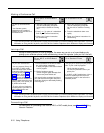
Here are some points to remember in using your feature phone with the
equipment controller:
■
■
■
You will not be able to use System Speed Dial Numbers, although you
may be able to program outside phone numbers onto your phone’s
feature buttons.
The feature phone’s last number redial button may not work.
The capabilities of a feature phone are in the phone itself. For example, if
you store a number on a feature phone’s auto dial button, that number is
stored in the feature phone. (This is different from storing a number on a
MLS- or MLC-model phone’s Auto Dial button. When you program a
button on an MLS- or MLC-model phone, the number is actually stored in
the equipment controller.)
The feature phone’s hold button does work, but the call is held at the
■
phone itself. Other phones connected to the equipment controller will not
be signalled that your line is on hold (it appears as a busy line).
Combination Extensions
A combination extension is an extension with two devices connected—either
two standard devices, or an MLS- or MLC-model phone and a standard device
(but not two MLS- or MLC-model phones). For instructions on how to install a
combination extension, see Figure 2-2 on page 2-5.
The following are examples of useful combination extensions:
■
MLS- or MLC-model phone plus standard telephone, for power failure
backup on extension jacks 10, 16, 22, and 28
■
MLS- or MLC-model phone plus answering machine
■
MLS- or MLC-model phone plus fax machine
■
MLS- or MLC-model phone plus tip-ring headset
■
MLS- or MLC-model phone plus an external alert (such as a bell or
chime).
Using the telephones in a combination extension is fairly simple. The main thing
to understand is that the two telephones share a single extension in the same
way several home telephones share a single number. An MLS- or MLC-model
telephone works like it always does and a standard telephone works like it
always does when connected to the equipment controller. Only one phone or
device can be used at a time, unless you want to join the two on a single call
(the same way two people can pick up the same call on different telephones at
home). For example:
■
■
■
■
Both phones share the same primary line.
Both phones share the same Centrex extension number.
Both phones share the same voicepath; that is, when either one is busy,
the extension is busy.
The lights on the MLS- or MLC-model phone show what the standard
telephone is doing as well as what the MLS- or MLC-model phone is
doing. For an explanation of light patterns, see “Lights” on page 6-3.
Using Telephones
6-9



